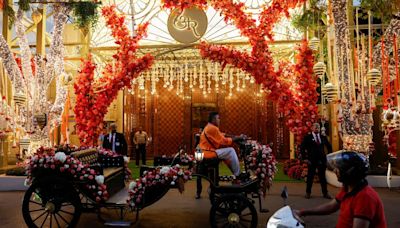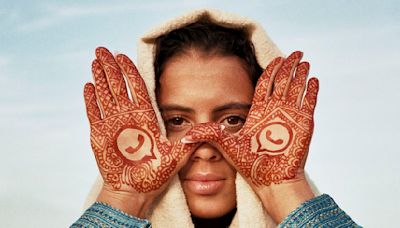Search results
Henna is a reddish dye prepared from the dried and powdered leaves of the henna tree. [1] It has been used since at least the ancient Egyptian period as a hair and body dye, notably in the temporary body art of mehndi (or "henna tattoo") resulting from the staining of the skin using dyes from the henna plant.
Henna (Lawsonia inermis) is a plant-based dye created from the henna tree, also known as Egyptian privet, and mignonette tree. The leaves of the henna plant contain a natural coloring pigment that is used for temporary body art, coloring hair, dye skin, fingernails as well as fabrics such as leather, wool, and silk. He
Henna is a natural plant dye, thought to date back to the 7th century BC. 1 It has been used for centuries to create intricate body art and as a conditioning colour treatment for hair. When used as a natural hair dye, henna offers glossy, richly-hued locks without the damage associated with most commercially available hair dyes.
May 1, 2020 · Henna—a natural dye that temporarily stains the skin— has been creating exquisitely beautiful artwork on the human body for centuries.
Mar 23, 2021 · Henna is often sold in a powdered form that can be soaked overnight and applied to the hair. However, Garodia suggests that not all packaged henna is a good buy. Some henna products may cause ...
Henna is a dye obtained from the henna plant (lawsonia inermis) native to Asia, Australia, and Northern Africa. It is typically used by Indian and Middle Eastern communities for cultural and religious occasions, as well as for beauty and cosmetic purposes. In Singapore, henna has particular cultural significance for the Malay and Indian communities, and has also increasingly gained popularity ...
Jun 24, 2024 · Apply henna paste to the roots with your fingers or a tint brush. Work the paste toward the tip, adding more paste if necessary, until the entire section is saturated with henna paste. 4. Twist and wrap the section over the original bun. Twist the dyed section of hair a few times.
Henna is Lawsonia inermis Fam. Lythraceae, a monotypic genus, the single example being L. inermis,1 native to North and East Africa, introduced and cultivated in the Persian Gulf region, the Arabian Peninsula, the Levant, and South Asia. It grows in semi-arid tropical zones, in dry sandy, iron-rich soils, and is adapted to extended drought.
Nov 3, 2017 · Henna has been used for thousands of years to stain fabrics, skin, and hair. Even today, it's a popular (and healthy!) way to dye your hair naturally. So, ho...
E-book. Henna for Hair. "How To". Finding Blue: Celtic Woading. The Henna Page is an educational resource devoted to the history, traditions, techniques, science and art of Henna, and is part of a site group devoted to Henna and related arts.





